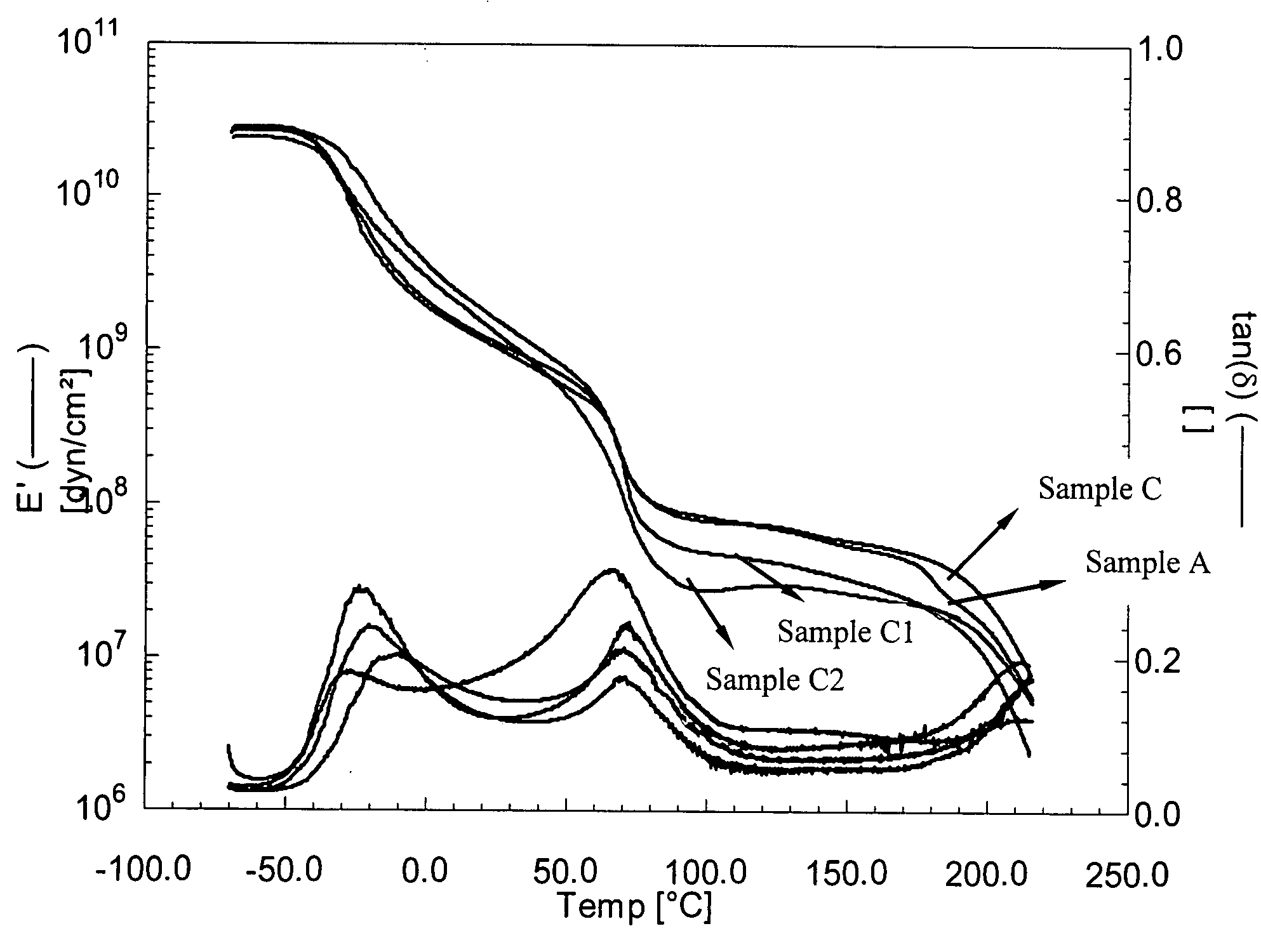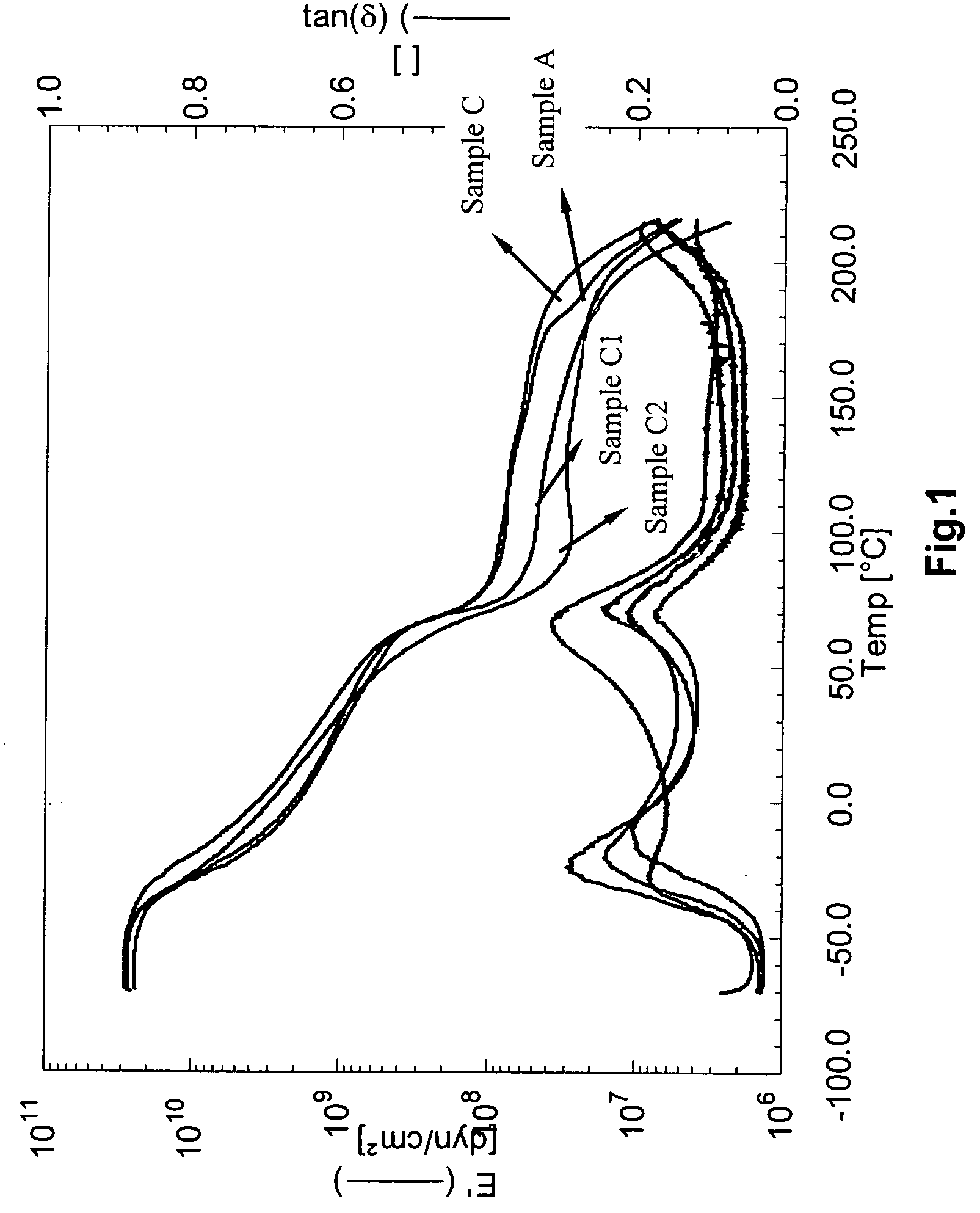High heat resistant adhesive and sealant compositions
a technology of urethane and composition, applied in the field of urethane diols, urethane prepolymers, creep-resistant adhesives and sealants, can solve the problems of unstable acid, decomposition, and general inferior heat resistance of cured hot melt, and achieve the effect of reducing or eliminating surface defects
- Summary
- Abstract
- Description
- Claims
- Application Information
AI Technical Summary
Benefits of technology
Problems solved by technology
Method used
Image
Examples
example 1
[0048]The following example illustrates the preparation of urethane diols.
[0049]100 grams (1.39 mol) of cyclohexanedimethanol was preheated to 80° C. in a reactor to which 69.4 g (0.56 mol) of MDI was added in three shots with stirring. The mixture was stirred further under vacuum and a significant exotherm was observed. The reaction temperature was controlled to be around 120° C. After 1 hr, the mixture became a very viscous melt and allowed to cool to room temperature. The product solidified into a hard, off white solid.
example 2
[0050]The following example illustrates the preparation of urethane diols with reactive diluents.
[0051]100 grams (1.39 mol) of cyclohexanedimethanol and 60 grams of polypropylene glycol PPG 2000 (0.06 mol) were mixed and preheated to 80° C. in a reactor to which 72.4 g (0.58 mol) of MDI was added in three shots with stirring. The mixture was stirred further under vacuum and a significant exotherm was observed. The reaction temperature was controlled to be around 120° C. After 1 hr, the mixture became a viscous melt and was allowed to cool to room temperature. The product solidified into an off white solid.
example 3
[0052]The following examples teach the preparation of reactive hot melt adhesives.
[0053]Ingredients including urethane diols and optional polyether polyols, polyester polyols, acrylics copolymers and tackifiers were mixed together at 80-100° C. in a flange flask equipped with a stirrer and thermocouple. After allowing time for adequate mixing, vacuum was applied to the flask, typically for a period of 2 hrs during which the temperature was raised to 110-120° C. The vacuum was removed and the polyisocyanate was added. After thorough mixing, the vacuum was reapplied and the reaction was allowed to continue for 2 hrs. The material was removed, cooled and stored.
[0054]The following structure shows an example of a dominant structure of the synthesized urethane diols, where R and R′ are an aliphatic, aromatic or cyclic aliphatic structure.
PUM
| Property | Measurement | Unit |
|---|---|---|
| glass transition temperature | aaaaa | aaaaa |
| heat resistance | aaaaa | aaaaa |
| thickness | aaaaa | aaaaa |
Abstract
Description
Claims
Application Information
 Login to View More
Login to View More - R&D
- Intellectual Property
- Life Sciences
- Materials
- Tech Scout
- Unparalleled Data Quality
- Higher Quality Content
- 60% Fewer Hallucinations
Browse by: Latest US Patents, China's latest patents, Technical Efficacy Thesaurus, Application Domain, Technology Topic, Popular Technical Reports.
© 2025 PatSnap. All rights reserved.Legal|Privacy policy|Modern Slavery Act Transparency Statement|Sitemap|About US| Contact US: help@patsnap.com



